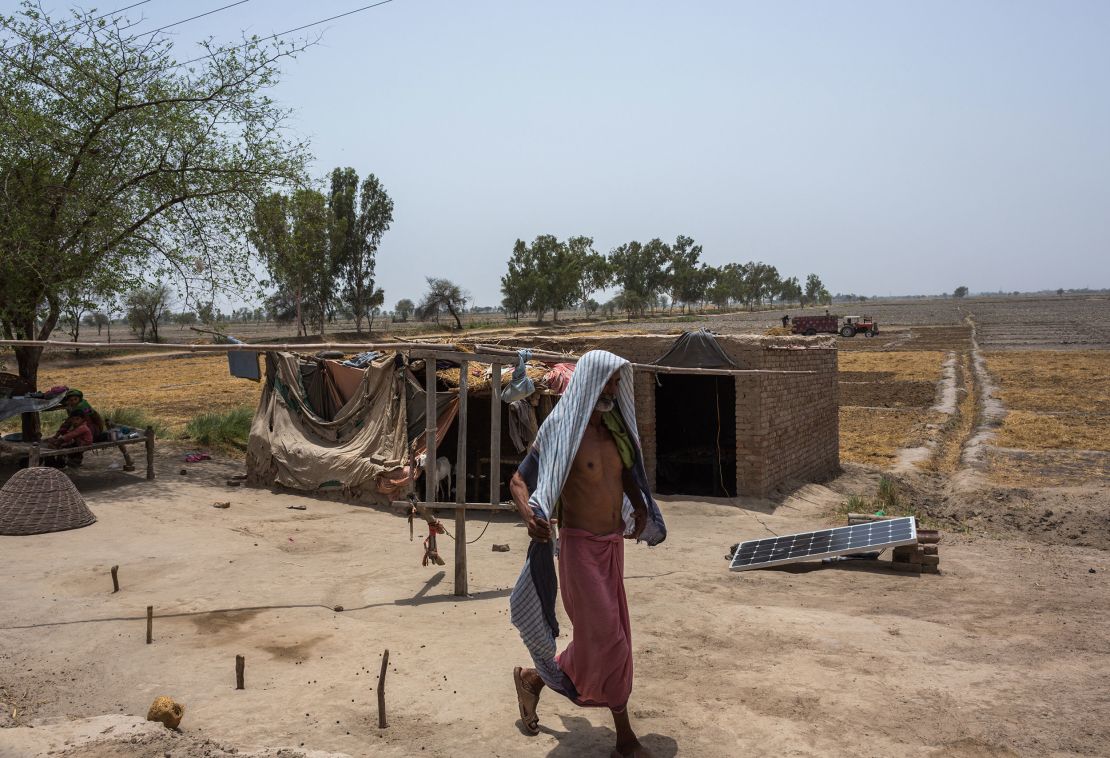Large parts of the world, including China and the Midwest US, are on track to become too hot for humans to handle as accelerating global temperatures expose billions to heat and humidity so extreme their bodies will no longer be able to cope, according to a new study.
Researchers used temperature and humidity data along with climate models to analyze humanity’s exposure to potentially lethal heat as the world warms, looking at a range of temperature increases from 1.5 degrees Celsius to 4 degrees Celsius above pre-industrial levels.
They found that above 2 degrees Celsius of warming, a significant portion of the world’s population will be vulnerable to “moist heat stress” with devastating consequences for human health, according to the study published Monday in the journal Proceedings of the National Academy of Sciences. The world has already warmed around 1.2 degrees Celsius.
“Moist heat stress is a particularly challenging problem, because it affects the human body directly, and causes morbidity and mortality,” said Matthew Huber, co-author of the study and a professor of Earth’s atmospheric and planetary sciences at Purdue University.
When levels of heat and humidity are high, sweat evaporates much more slowly than usual meaning its cooling effect is lost and the body can become unable to regulate its temperature. This can lead to heat exhaustion and heat stroke, which can cause heart attacks and organ failure. The old, the very young and those with pre-existing health conditions are most vulnerable to heat illness.
Temperatures that surpass human tolerance have been breached only a few times in human history, and for a few hours at a time in the Middle East and Southeast Asia, according to the report.
But as temperatures continue to rise, many more will be exposed and for much longer periods, the study found.
While countries have committed to limiting global warming to below 2 degrees Celsius, with the aim of 1.5 degrees Celsius, they are way off track. Even if global climate pledges are met — which the world is not currently on course to do — temperatures are expected to rise between 2.1 and 2.9 degrees Celsius, according to a recent UN report.

Above 2 degrees of warming, 2.2 billion people who live in Pakistan and the Indus River Valley in India, 1 billion people in China and 800 million people in sub-Saharan Africa will experience many hours of heat and humidity a year that exceed human tolerance levels.
People in these regions will be even more vulnerable as many lack access to air conditioning or other ways to cool down, the report noted.
At 3 degrees — which the study authors say is the most likely level of warming by 2100 if no action is taken — there is a sharp increase in people exposed to life-threatening heat and humidity. “It’s really incredibly disturbing,” Huber told CNN.
Humid heat waves will affect swaths of the world not used to such extreme conditions.
The Midwest US will become a “moist heat stress hotspot” at 3 degrees of warming, according to the report. The Midwest is susceptible to this kind of heat stress in part because its climate walks the line between dry and humid, Huber explained, allowing the region’s heat to push into the danger zone on very humid days.
Another factor that makes the region vulnerable is its agriculture and the phenomenon called “corn sweat,” Huber said.
“The plants that we eat are sweating through evapotranspiration, and that may be adding to the humidity above what would normally be there,” he said.
So-called “hot hours” — times where heat and humidity are especially life-threatening — will be concentrated in the Missouri and Mississippi River valleys but also elsewhere in US including the Gulf of Mexico coast and the Atlantic seaboard, according to the study.

At 4 degrees of warming, the study’s worst-case scenario, researchers found that 1.5 billion people around the world would face a month of moist heat stress each year, and roughly 2.7 billion people will experience at least a week of these extreme conditions.
Parts of Yemen could experience heat and humidity that exceeds human tolerance for more than 300 days a year, making it virtually uninhabitable.
“Around the world, official strategies for adapting to the weather focus on temperature only,” Qinqin Kong of Purdue University and a study co-author, said in a statement. “But this research shows that humid heat is going to be a much bigger threat than dry heat.”
Keeping warming below 2 degrees Celsius by cutting planet heating pollution will sharply reduce global exposure to life-threatening heat and humidity, the report found.
“Every tenth of a degree or anything like that afterwards plays a role, and we want to reduce warming as fast as we can,” Daniel Vecellio, lead author of the study and postdoctoral researcher at George Mason University, told CNN. “If we get to these emissions reductions faster, here’s all the people we can save, here’s all the lifestyles that don’t have to be changed.”
Kim Cobb, climate scientist at Brown University who was not involved with the study but was a lead author on the most recent UN Intergovernmental Panel on Climate Change report, said the study’s conclusions are “compelling” but not surprising. “Extreme heat is already responsible for countless deaths worldwide every year,” Cobb told CNN.
“It’s important to underscore, as this study does, that heat is not an equal opportunity killer. It disproportionately kills people in lower income communities, often communities of color. This is as true here in the US as it is around the globe.”







